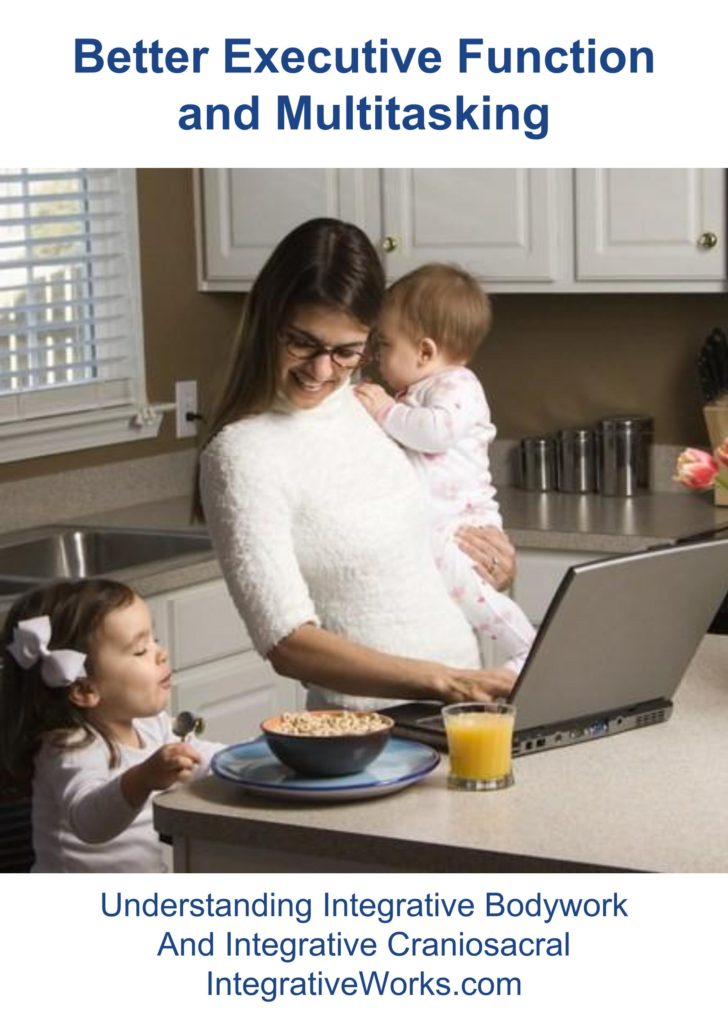Many of my clients, both adults and school children, are interested in better Executive Functioning. They want to improve their ability to engage with others more appropriately. Doing so produces better outcomes, especially when dealing with subtle social cues while multi-tasking. Part of this effort involves improving self-monitoring, impulse control and flexible thinking.
In the real world, our body is managing a lot of incoming information at once. As you are reading this, you are managing some background sensation. Your clothes touch you, there are background noises, your digestion is working, your body manages muscle tension. These are pretty basic. Almost everyone’s daily scenario usually involves a lot more. You may be sipping hot coffee, reading work messages, monitoring that bowl your toddler might knock off the counter, comforting your baby, listening to the weather report – and more.

You are also managing complex responses. You might be setting the cup out of the toddler’s reach. Using the laptop to scan the email. Holding the baby to calm him, without straining your back. Managing your responses to your toddler so that things move along well. Encouraging her to eat. There are many other parts of managing your morning routine, but you get the idea.
Modulation is the ability to manage appropriate focus while many things are happening. It’s the opposite of ADD and essential to great executive functioning. When modulation is working well, you can manage more things without getting frazzled or overwhelmed. More than that, the subtleties of communication require less effort. It is the ability to refine your attention to the task at hand without losing track of the context of your time, surroundings, etc.
In our scenario, good modulation is the difference between getting through a rough morning, managing a good morning and a enjoying a productive morning. It means a better understanding of what you are reading, having better timing on moving along and being more engaging with your child. It’s about enjoying a better quality of life.
Integrative Modulation is a pervasive shift in the clarity, attention, alertness and impulse control. Clients refer to it as “Cranial Calm.” One client says it is like getting the effects of deep massage except that it lasts much longer and is less trouble in the middle of her busy day. One lawyer will come in before intense trials and explain that I need to do whatever it is that I do to that makes him less reactionary and a better negotiator.
Integrative Craniosacral is based in direct techniques, which create longer lasting changes and a self-correcting system. It employs functional techniques to create relief and calm the system. When they are properly combined, the result is the lasting effect called Integrative Modulation.
Here’s a short section out of my therapy manual on Integrative Modulation.

Tony Preston has written and taught about anatomy, trigger points and cranial therapies since the mid-90s. He has a practice in Atlanta, Georgia where he sees clients.
Question? Comment? Typo?
The Body Guild.org
(404) 226-1363
tony@thebodyguild.org



